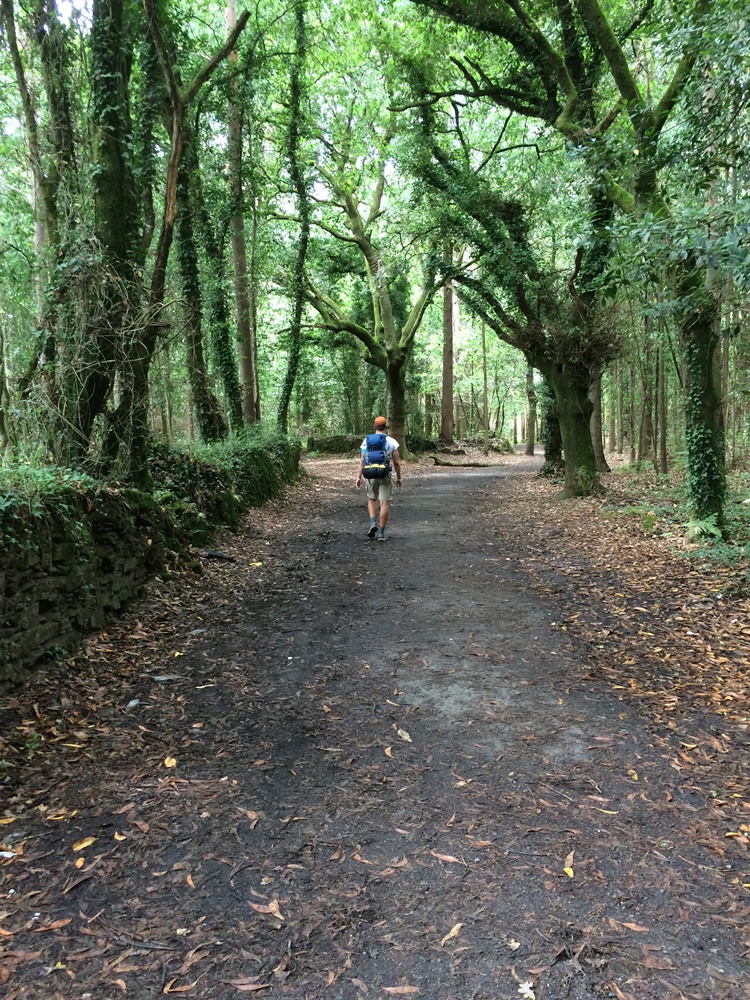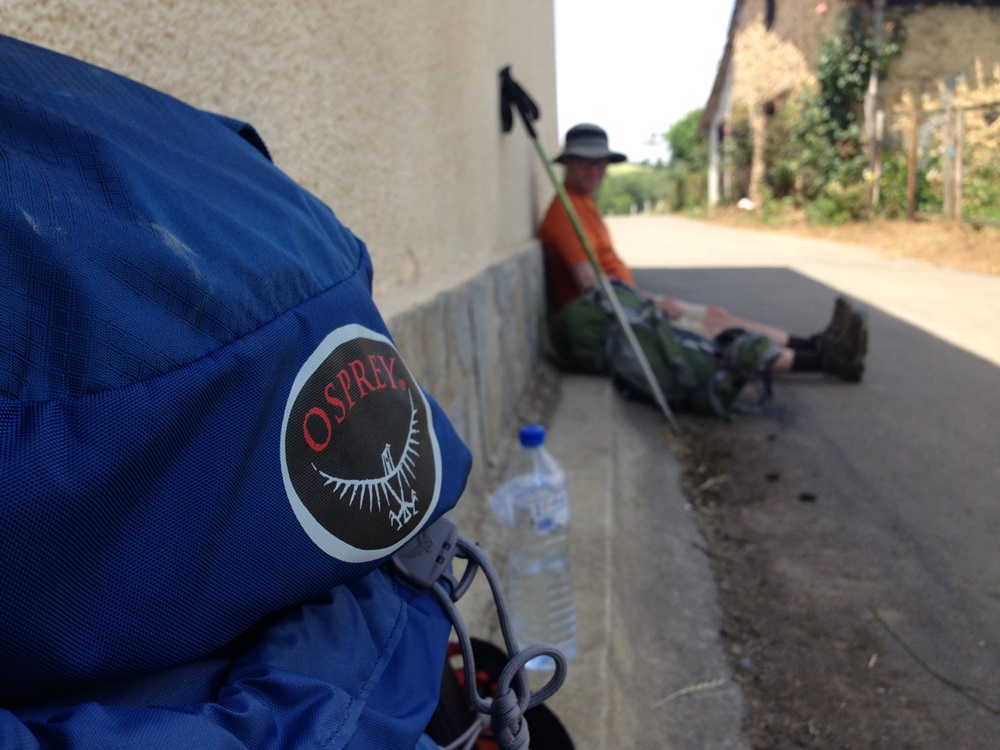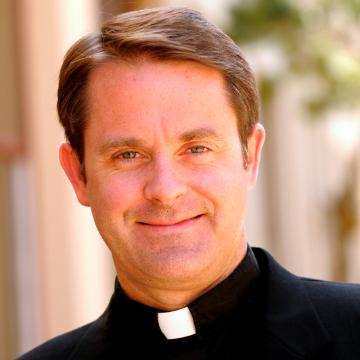
Syncing Body, Mind, and Soul
Michael C. McCarthy S.J. '87 M.Div. '97

Quentin Orem ‘11 on the Camino de Santiago de Compostela
I spent this past July walking more than 500 miles on the Camino de Santiago de Compostela. I am often asked: “what was the high point?” It’s a hard question, because there were no blinding flashes of insight, and the beauty of Northern Spain was so constant it’s hard to identify a single moment that stands out.
What was the high point? Well, really, just walking.
As I mentioned in a previous blog, while not everyone goes on a pilgrimage with a religious purpose, I did. But to many people that can mean there were two aspects to the trip: the hiking part and the spiritual part. That’s not the way I think. In fact, I think it’s a mistake to impose dualistic thinking on religious experience.
When I say that walking was the high point of the pilgrimage, I mean that it soon became an activity where my body, mind, and soul synced up with an ease and an awareness I have never experienced.
My companion, Quentin, and I walked on average 18 miles a day—some days as few as 12 miles, some as many as 25, with two rest days sprinkled in. Not long into the journey we fell into a rhythm where we became exceptionally conscious of our bodies. Each day, around mile 15, our feet would begin speaking to us, then soon complain: “What do you think you are doing? Isn’t it time you lie down and put us up for the night?” On long uphill stretches, our legs, our lungs, and our sweat glands would work extra hard and only ask for some gratitude and respect. Happily given. Later in the day our skin would thank us for a shower and our backs rejoice at the softness of a bed. Sitting down in hunger, very simple bread and wine would (in the words of the Psalmist) “gladden the heart” (Ps. 104:15).
It was the sheer physicality of the Camino, with its distinct pains and pleasures, with the humble commitment to constant repair that was at the heart of our spiritual experience. As we gave ourselves to the rhythm, the mind naturally entered a contemplative space with its own pleasures and pains.

Fr. McCarthy taking a rest
Did Quentin and I give ourselves to regular prayers, Scripture readings, liturgies, sitting in churches, conversations about God? Of course. But those activities gave focus to the main work of the pilgrimage, which was not just to walk but to walk with intention.
When Jesuits talk about “finding God in all things,” the presumption is that, to a person with a seeking heart, God is present in the activity at hand. You just need to allow yourself an imaginative horizon to see it.
When St. Ignatius of Loyola says that the human purpose is to “praise, reverence, and serve God,” a lot of people get hung up on the praise and reverence part. As if it requires some charismatic expressions that are sometimes parodied.
My experience on the Camino confirmed an alternative understanding. When I am aware that my body, mind, and soul has come to a point of greater integration that IS praise of God. When I reverently accept who I am, in all of my uniqueness, in my particular convergence of body, mind, and soul, that IS reverence for God.
And we find that the bridge between what we commonly understand as “the sacred” and “the secular” has become an extremely short one, but that's a topic for another blog.

